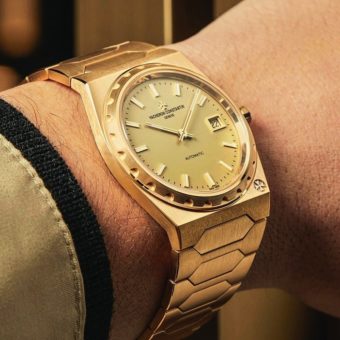The tourbillon, invented over 200 years ago by the brilliant watchmaker Abraham-Louis Breguet in order to improve the precision of pocket watches, is still considered the pinnacle of precision watchmaking. The filigree mechanism, with its balance and escapement permanently rotating in a cage to defy the influence of gravity, literally makes the hearts of aficionados and connoisseurs beats faster, as the choreography of the itsy-bitsy rotating mechanism is almost hypnotizing and captivates the observer. This rings especially true for the flying tourbillon, a particularly refined form that Alfred Helwig, a master watchmaker and teacher at the Glashütte School of Watchmaking, developed around 1920 in the famous German watch town. Thanks to the special bearing with just one bridge, it creates the impression of flying above the dial.
With gyroscopic designs and creations mounted on multiple axes, a few long-established and modern luxury manufacturers, as well as independent watchmakers, have taken the “whirlwind,” as the tourbillon is affectionately called by enthusiasts, to literally new dimensions in the wake of the renaissance of mechanical wristwatches.
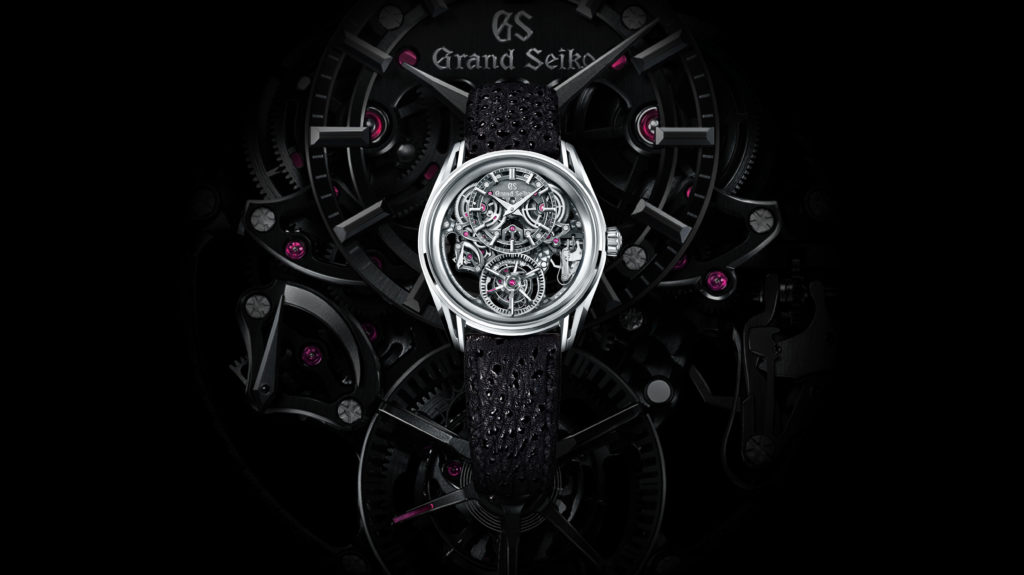
For its first tourbillon, the Kodo Constant-Force Tourbillon, Grand Seiko drew inspiration from the beauty of the original mechanism, but equipped it with an ingenious design that likewise has a long tradition in fine watchmaking, yet is nonetheless very rare: the constant force. The patented mechanism was first introduced in 2020 in a concept movement called the T0 Constant Force movement. To bring this to the market, the team of designers, engineers and craftsmen entrusted with assembling and completing the movement and case required two years. Every single one of the fully 340 components of this caliber was re-examined and, if necessary, redesigned or reworked. The effort paid off: the 9ST1 caliber is not only smaller than the previous concept movement, but also delivers greater accuracy, as the constant-force mechanism has been optimized.

This novel system ensures an even distribution of energy to the escapement, regardless of the status of the mainspring. The technical sophistication of Grand Seiko’s Caliber 9ST1 is that the hand-wound movement combines the constant-force mechanism with the tourbillon on the same axis. The tourbillon eliminates the precision drop caused by gravity by incorporating the escapement and balance in a rotating cage. Since there are no wheels or other components between the two mechanisms, there is no loss or change in the transmission of torque from the constant-force mechanism to the balance. This provides the mechanism with a longer power reserve of 50 hours and the balance with a more stable amplitude. Together, these features ensure the movement’s highly consistent rate accuracy.
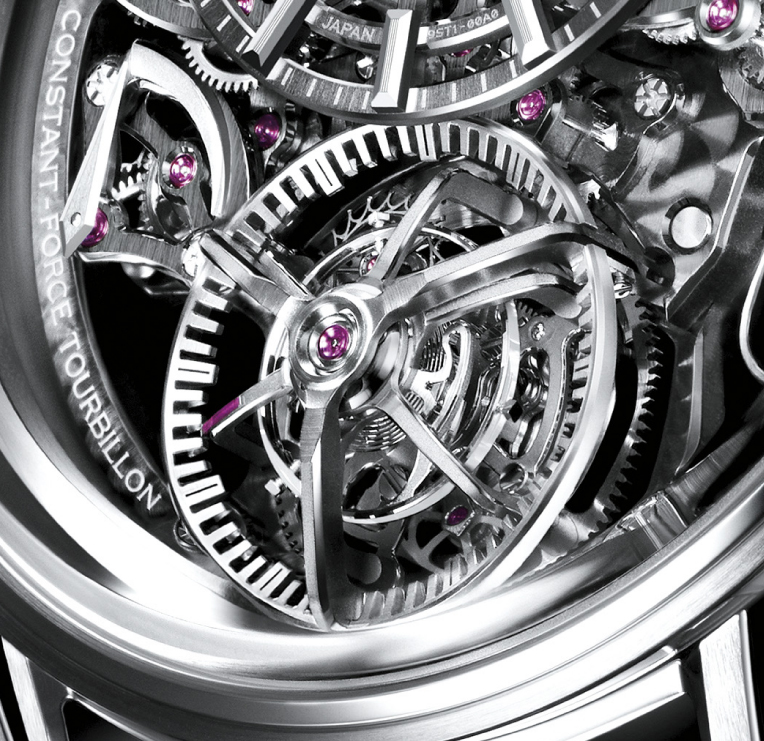
The combination of the two mechanisms not only results in higher precision in the Kodo Constant-Force Tourbillon, but is further a feast for the eyes. The inner tourbillon cage rotates smoothly while the balance oscillates constantly at eight beats per second, and the outer constant-force cage follows this rotational motion at precise one-second intervals. This sequence, which can also be followed by ear, led Grand Seiko to name this bravura piece which translates to “heartbeat.”
The watch also features a stop-seconds mechanism. This enables the rotating tourbillon cage to be stopped by pulling out the crown for precisely setting the seconds. Speaking of accuracy, to meet the company’s high standards, each movement is tested for a full 48 hours in a total of six positions at three different temperatures.
This is twice the length of testing that is standard at Grand Seiko and other industry norms. In addition, each caliber is tested for 34 days to ensure the precision rate, which Grand Seiko quantifies as +5 to -3 seconds per day, over an extended period of time. Once testing is complete and this new standard has been met or exceeded, the movement’s individual performance characteristics are documented in a certificate that Grand Seiko includes with each of the 20 models.
Highest Craftsmanship
Grand Seiko wouldn’t be Grand Seiko if the brand hadn’t created the appropriate setting for this mechanical masterpiece. As is de rigeur at Grand Seiko, the 950 platinum case of the Kodo Constant-Force Tourbillon — which is pressure-resistant to ten bars — and the Brilliant Hard Titanium coating — which is developed in-house — are finished with the time-honored Zaratsu technique that is signature to the brand. Many surfaces, such as the case flanks and lugs, are polished to a distortion-free mirror finish, creating a sophisticated interplay of light and shadows.
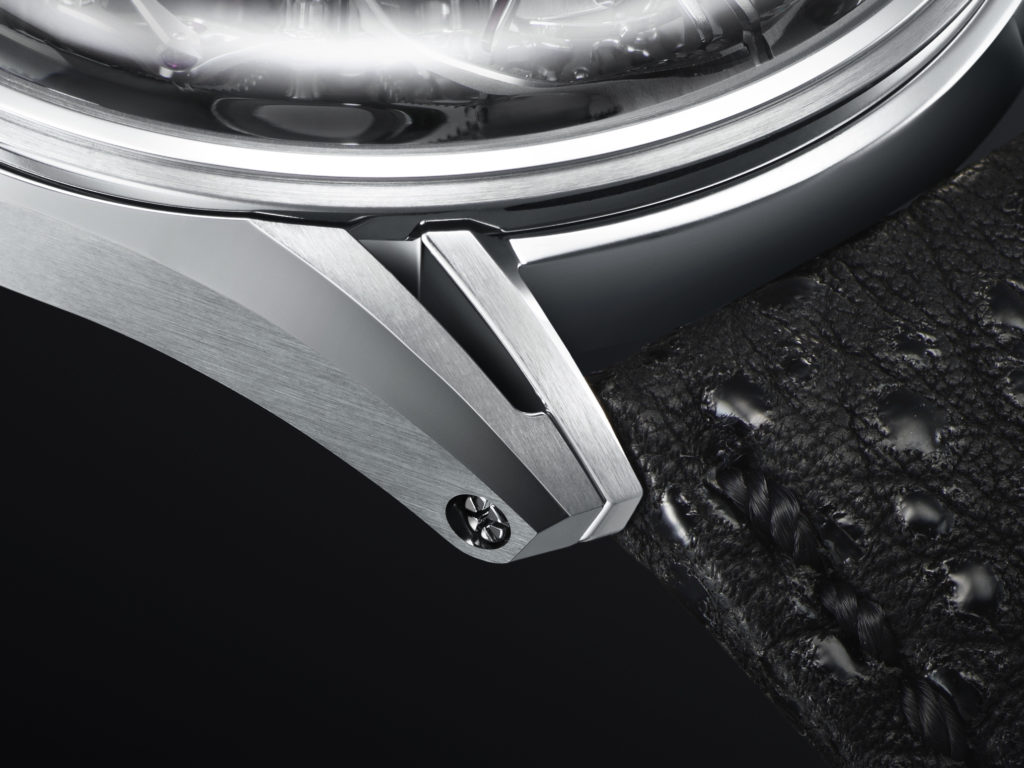
Thanks to its open architecture, the essential components, such as the tourbillon, the off-centered time indication and the power reserve display, can be admired from all sides. A look through the sapphire crystal case back also reveals the high standard of finishing, such as the meticulously beveled edges as well as the plate and winding wheels decorated with striped finishes. This has a similar high-quality feel than the Swiss and Glashütte luxury brands.
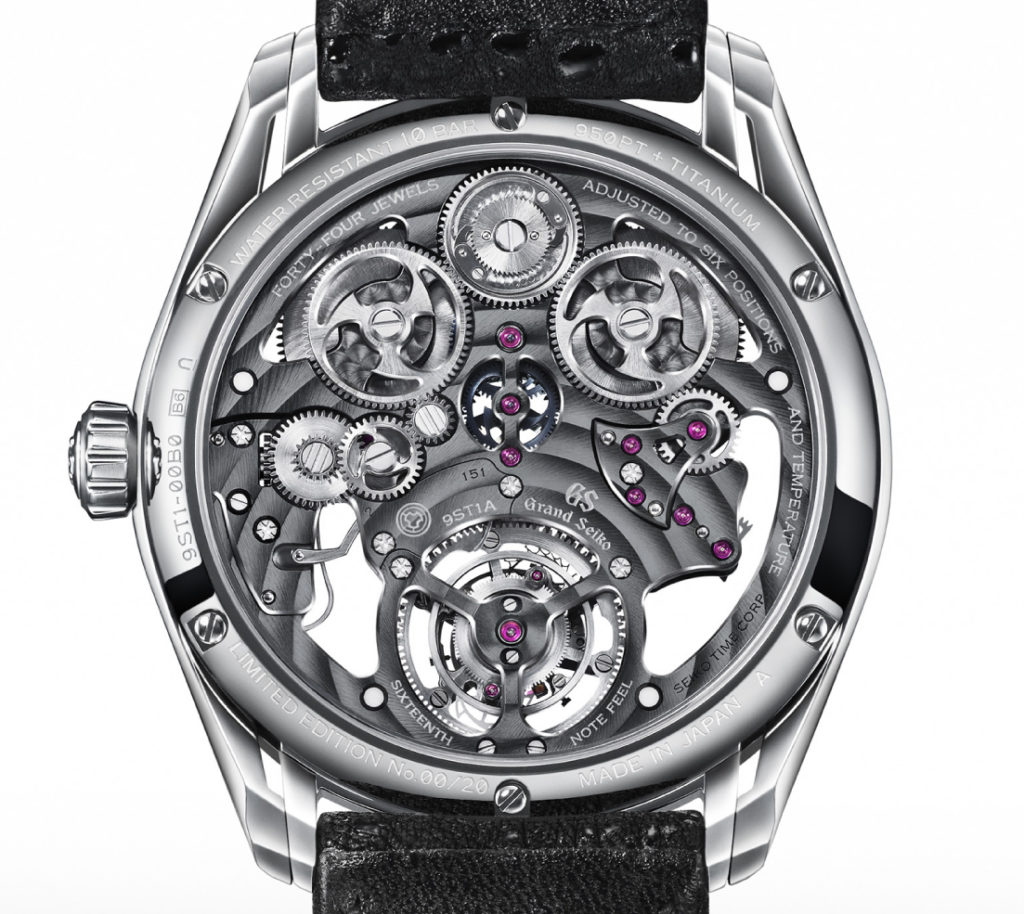
The strap of the elevated model also impresses with its sophistication. Made of calfskin, it is treated with a traditional method that was once used on samurai armor, among other things. Another nod to Japanese arts and crafts is the Urushi lacquer, which is applied by hand in several layers to the finely polished surface of the strap. This coating has a luster and depth that even modern resin lacquers cannot match. On top of that, the watch comes with an interchangeable crocodile leather strap.
Limited to 20 total editions, the Grand Seiko Kodo Constant-Force Tourbillon will retail for $350,000.
To learn more, visit Grand Seiko, here.




